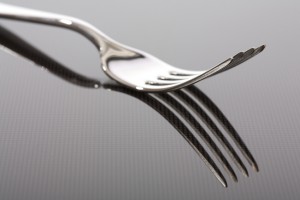Gluten Free Fiber
Gluten free food is available now more than ever. Gluten free recipes too. William Davis’ book “Wheat Belly” drew attention to wheat and gluten consumption on belly fat. Stars like Gwyneth Paltrow of GOOP swear by a gluten-free diet. Tennis star Novak Djokovic eats gluten-free.
BUT IS A GLUTEN FREE DIET HEALTHY? Djokovic suggested the secret of his best season ever in 2011 was going gluten-free.
Gluten free recipes or gluten free food; food free from gluten don’t contain gliadin. That doesn’t mean they’re healthy.
Nutritious whole grains aren’t always found in gluten free cereal.
Wholegrains are part of a heart healthy diet.
Unless fortified, what do we get from gluten free food nutrient wise? Now we’ve lots of Gluten free cereal to choose from.
Whole grain
WHAT’S SO GREAT ABOUT WHOLEGRAINS? Wholegrains can provide us with enough fibre and help us meet our RDA vitamins. Eating the right type of fibre or fiber and the right amount RDA of fibre can help improve our cardiovascular and overall health. 2 factors prevent us from eating enough fibre. Whether it’s fibre or fiber in your part of the world 🙂
i) Food labels. Names listed on food labs be confusing.
ii) Gluten free diets
According to Coeliac UK most people in the UK do not eat enough fibre and knowing about whole grain gluten free foods is one way to increase fibre intake.
Adults in the UK should have 18 grams of fibre daily. There are no recommendations for children, but they should eat proportionally less.
Healthy Gluten Free Diet
Where am I getting my whole grains from? Can you get whole grain gluten free foods?
On a Gluten free Diet because you’ve accurately diagnosed with coeliac disease? Or on a GF diet because you’ve identified with gluten intolerance ? Don’t miss out on nature’s super healthy outer layers of unrefined whole grain.

whole grain gluten free foods
The “whole” in whole grains. To get your whole grain gluten free foods we should understand what is a whole grain exactly. In their original, unprocessed state, grains like wheat, oats, kasha and rice have outer layers or coats. These layers contain healthy vitamins, minerals and fiber as well as carbohydrates, some protein and healthy, unsaturated fats. A breakdown of the healthy layers:
- Bran – Outer layer of the grain that contains fiber, antioxidants, B vitamins, phytochemicals, and 50-80% of minerals in grains like iron, copper, zinc, magnesium
- Endosperm – middle largest layer containing mostly carbohydrates, protein, and small amounts of some B vitamins and minerals – Refined grains are mainly composed of only the endosperm portion of the grain. The milling process removes most of the bran and some germ, along with the majority of fiber, vitamins, minerals, antioxidants and phytochemicals. As much as 75% of phytochemicals (phytonutrients) are lost in the refining process!
- Germ – inner component containing healthy fats, B vitamins, phytochemicals, and antioxidants like vitamin E
In humans phytochemicals can help to protect against chronic diseases like cardiovascular disease, type 2-diabetes and cancer. Hundreds of different phytochemicals exist in whole grains!
whole grain gluten free foods
So now you’re convinced of the power of whole grains. Here’s how to get them on your plate and in your gut for good gut health and a chance at keeping your blood sugar stable, feeling fuller for longer and avoiding weight gain on a gluten free diet.
Your Naturopathic Portfolio is Safe. Clinical. Practical. Effective.
5 Wholegrain Gluten free Foods [tweetthis]5 Wholegrain Gluten free Foods[/tweetthis]
1) Teff 2) Buckwheat 3) Amaranth 4) Millet 5) Teff … EAT DRINK TAKE MAKE … whole grain gluten free foods
Teff: This smallest of grains is nutty and earthy in flavor. Use 3 parts water to 1 part teff. Boil water, add grain and simmer for 15 to 20 minutes. The texture of teff is like cream of wheat and the flour can be used to make pancakes. You can add cooked teff to soup or use teff as the main ingredient for polenta instead of cornmeal.
Buckwheat: Despite its name, buckwheat is not related to wheat. So we can include it as one of our 5 whole grain gluten free foods. Buckwheat is pyramid shaped and known as kasha or buckwheat groats. To bring out its earthy flavour, you can cook 1 cup buckwheat with one egg in a large deep non-stick pan over medium heat. Do no forget to stir the buckwheat. This keeps it from clumping until the mixture is dry and separated. Add 2 cups water or broth and cook uncovered over low heat for about 15 minutes. You can mix cooked buckwheat with lentils or other pulses, herbs and a bit of goat cheese or ricotta (casein free). Or Alternatively use it as to stuff bell peppers, courgettes, aubergines, squash, rolled cabbage leaves, squash, etc. Buckwheat flour can be used to make buckwheat pancakes.
Quinoa: Quinoa must be rinsed well before cooking to remove bitter-tasting saponins. Quinoa cooks in just 15 minutes. Use 2 parts water to 1 part quinoa. You can use quinoa in an array of salads e.g. instead of bulgur to make tabbouleh. Quinoa is also a good substitute for rice in dessert rice pudding.
Amaranth: Amaranth is approx. the size of a poppy seed and has a light peppery taste. It’s one of the best savoury whole grain gluten free foods. You can use 3 to 6 parts water to 1 part amaranth. Boil water, add grain and gently boil for 15 to 20 minutes. As it cooks, amaranth softens from the inside, releases a lot of starch and thickens the cooking liquid. Rinse cooked amaranth and let it drain before using. You can use amaranth to thicken soups and stews. You might want to add milk, seasonal fruit and raw honey for a healthy breakfast. You can even “pop” dried amaranth and make it into a granola-type bar.
Millet: Millet is about the size of a small mustard seed, this grain has a mild flavor. Use 2 to 3 parts water to 1 part millet. Boil water, add grain and gently boil for 35 to 40 minutes. You may also “toast” millet in a hot pan before boiling to get a nuttier flavor. Top millet with ground fresh cinnamon bark and seasonal fruit for breakfast or add to make a salad with tomatoes, radishes and chopped basil, for example. Millet is also a great alternative to rice in casseroles, meat dishes and stuffing.
Always read the label. The first ingredient listed should say “100 percent whole grain.” Avoid any food that mentions the phrase “enriched” or “refined.” Look for the Whole Grain Stamp from the nonprofit Whole Grains Council. The “Whole Grain” stamp tells you that the product contains at least a half serving of whole grains.
Did you find this article on whole grain gluten free foods helpful? If you found this article helpful, or you would like to read similar articles, please leave your feedback to or PR Team here

